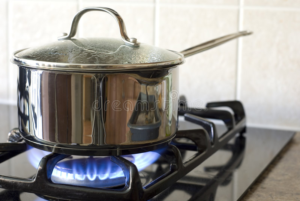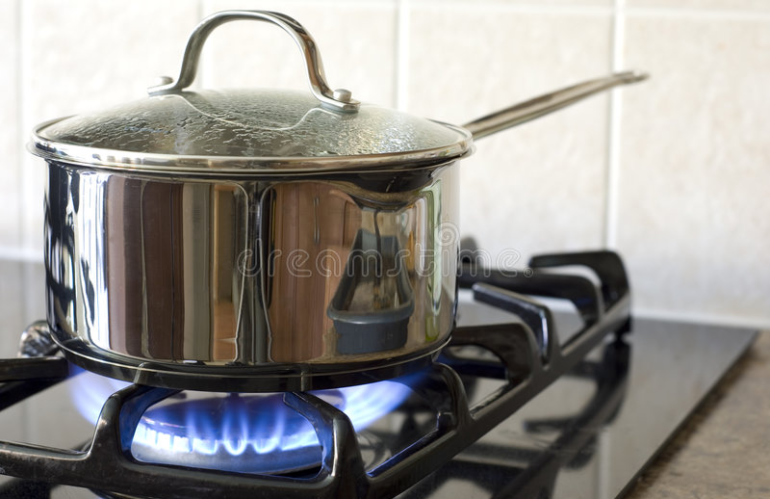People use a variety of heat sources to cook food, including gas, wood, and electricity.
Each of these heat sources can create indoor air pollution during cooking. Natural gas
and propane stoves can emit nitrogen dioxide, carbon monoxide, formaldehyde in
addition to the particle pollution that all types of stoves produce as well as other harmful
pollutants, which can be toxic to people. Nitrogen dioxide levels are consistently higher
in homes that cook with gas rather than electric stove. Peak indoor air pollution from
gas stoves can reach levels that would be illegal outdoors. Older, poorly maintained
stoves can be even worse contributors to air quality.

Studies show that air can be unhealthy to breathe when people cook in kitchens with
poor ventilation. The best way to ventilate your kitchen is to use a properly installed,
high efficiency range hood over your stove. A high efficiency range hood has a high
cubic feet per minute (cfm) rating and a low sones (noise) rating. If you have a gas
stove, a qualified technician should inspect it every year for gas leaks and carbon
monoxide.
How to reduce the Indoor Air Quality pollution from your gas
Stove?The best solution is to switch to electric stoves. However, If you’re stuck with your gas
stove for a while longer, there are precautions you can take to reduce the amount of
indoor air pollution you’re exposed to:1. Ventilate
1. If you have a range hood:
- Check to make sure it vents to the outdoors.
- Use it while cooking or using your stove
- Cook on the back burners, if possible, because the range hood exhausts this
area more effectively.
If you don’t have a range hood:
- Use a wall or ceiling exhaust fan while cooking.
- Open windows and/or exterior doors to improve air flow through the kitchen.
2. Install and maintain carbon monoxide detectors: Ideally install in kitchen and in or near bedrooms
3. Reduce gas stove use: Minimize gas stove use by instead using plug-in induction
cooktop and other electric appliances, such as electric kettles, toasters, microwaves,
instant pots, etc
References
- Gas Stoves: Health and Air Quality Impacts and Solutions — Rocky
Mountain Institute,2020 - Health Effects from gas stove pollution – By Brady Seals and Andee
Krasner - Indoor Air Pollution from Cooking- California Air Resources Board
https://ww2.arb.ca.gov/resources/documents/indoor-air-pollution-cooking



